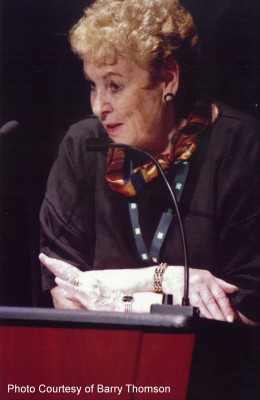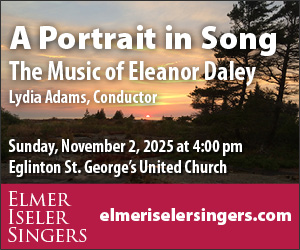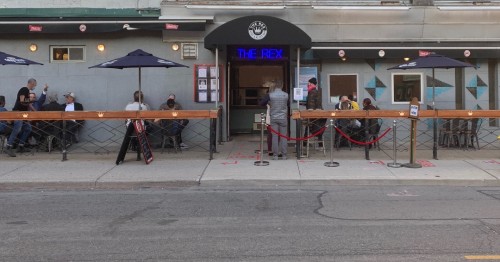 It would seem the rumours about a second wave in the spread of COVID-19 this fall are not rumours at all. We’ve already seen a dramatic rise of cases in Toronto and elsewhere around the country and the world recently, and fall is just starting. There are various factors to blame: cooler weather, which the virus seems to like; the inevitable relaxation, brought on by partial reopening, of mitigation measures such as social distancing and avoiding large gatherings, with numerous instances of socially irresponsible behaviour across the board; and the Rubik’s Cube-attempt to reopen schools, which is just getting under way. Not to mention that flu season – which will give our health-care system a double whammy to contend with – is upon us.
It would seem the rumours about a second wave in the spread of COVID-19 this fall are not rumours at all. We’ve already seen a dramatic rise of cases in Toronto and elsewhere around the country and the world recently, and fall is just starting. There are various factors to blame: cooler weather, which the virus seems to like; the inevitable relaxation, brought on by partial reopening, of mitigation measures such as social distancing and avoiding large gatherings, with numerous instances of socially irresponsible behaviour across the board; and the Rubik’s Cube-attempt to reopen schools, which is just getting under way. Not to mention that flu season – which will give our health-care system a double whammy to contend with – is upon us.
It’s a hard lesson to learn, but this is likely to get worse before it gets better; we’re nowhere near the end but somewhere nearer the middle of the beginning, or (shudder) on the cusp of a new beginning of this pandemic. It’s easy to forget that the reason we were able to flatten the curve of infection in the first place is that we all made personal sacrifices during the lockdown period, and with the above-mentioned factors in play, now is not the time to relax those efforts, but to redouble them. We can’t do anything about cooler weather or the flu season, but we can wake up and continue to be careful and vigilant before we’re back to square one with another lockdown.
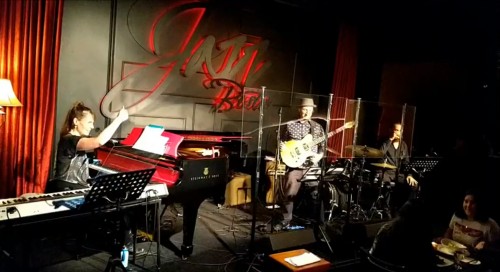 From the point of view of this column I’d like to address the delicate balancing act of reopening jazz, both in live venues such as Jazz Bistro and The Rex, and in the post-secondary schools which offer jazz programs. Both the Bistro and The Rex have partially reopened recently with social distancing measures in place, mostly having to do with a reduced capacity of both the size of audiences and bands. The Bistro is having live music Wednesday through Saturday with solo piano from 5 to 7, followed by duos and/or trios starting at 8pm with audience capacity limited to 50 people. The Rex spent the lockdown refurbishing its stage and began presenting live jazz again on September 3, also with a reduced crowd capacity. They’re going seven nights a week with trios starting at 5:30 and slightly larger bands at 9pm. I haven’t been yet, but I’m told they’ve installed a plexiglass barrier across the front of the bandstand, I suppose to protect customers from the blowing air of wind instruments. I’m not sure how this affects sound but the image conjures up chicken wire surrounding the stages of livelier country and western bars – think The Blues Brothers. Such are the realities of jazz, COVID-19 style.
From the point of view of this column I’d like to address the delicate balancing act of reopening jazz, both in live venues such as Jazz Bistro and The Rex, and in the post-secondary schools which offer jazz programs. Both the Bistro and The Rex have partially reopened recently with social distancing measures in place, mostly having to do with a reduced capacity of both the size of audiences and bands. The Bistro is having live music Wednesday through Saturday with solo piano from 5 to 7, followed by duos and/or trios starting at 8pm with audience capacity limited to 50 people. The Rex spent the lockdown refurbishing its stage and began presenting live jazz again on September 3, also with a reduced crowd capacity. They’re going seven nights a week with trios starting at 5:30 and slightly larger bands at 9pm. I haven’t been yet, but I’m told they’ve installed a plexiglass barrier across the front of the bandstand, I suppose to protect customers from the blowing air of wind instruments. I’m not sure how this affects sound but the image conjures up chicken wire surrounding the stages of livelier country and western bars – think The Blues Brothers. Such are the realities of jazz, COVID-19 style.
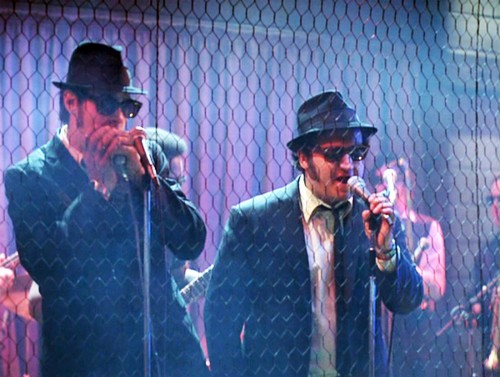 Even with such strictures, I salute these attempts at reopening because what else can they do? We have to start somewhere and somehow after months of nothing. But even so, for musicians and fans alike it’s a personal decision about whether to take part in all this, and not one to be taken lightly. I received a couple of calls from pianist friends to play at the Bistro and after much gnashing of teeth, turned them both down. It wasn’t easy to do so, I badly want to get out and play, but for mostly personal reasons I feel it’s too soon yet. I’m 64 and have a couple of underlying medical conditions and so does my wife, so the risk/cost of catching the virus outweighs a night of playing for me. It has absolutely nothing to do with the money being offered, although that’s easy for me to say. I’m relatively lucky in that I don’t need the money that badly, but I understand that some do. I decided to heed the advice of a musician friend who said, “If you don’t absolutely need to do it, then don’t.” I’m biding my time till the spring, when God willing, the second wave will be over and it may be safer. In the meantime I pray for and applaud those walking this public performance tightrope.
Even with such strictures, I salute these attempts at reopening because what else can they do? We have to start somewhere and somehow after months of nothing. But even so, for musicians and fans alike it’s a personal decision about whether to take part in all this, and not one to be taken lightly. I received a couple of calls from pianist friends to play at the Bistro and after much gnashing of teeth, turned them both down. It wasn’t easy to do so, I badly want to get out and play, but for mostly personal reasons I feel it’s too soon yet. I’m 64 and have a couple of underlying medical conditions and so does my wife, so the risk/cost of catching the virus outweighs a night of playing for me. It has absolutely nothing to do with the money being offered, although that’s easy for me to say. I’m relatively lucky in that I don’t need the money that badly, but I understand that some do. I decided to heed the advice of a musician friend who said, “If you don’t absolutely need to do it, then don’t.” I’m biding my time till the spring, when God willing, the second wave will be over and it may be safer. In the meantime I pray for and applaud those walking this public performance tightrope.
But weighing the risks and rewards of reopening jazz in a club pales in comparison to the complexity of reopening jazz in schools. I can’t imagine a more difficult needle to thread, nor do I want to, and those of us in the field of jazz education have spent the latter part of the summer pondering this and preparing for it. The opening of schools in general is rife with uncertainties and variables for teachers, students and parents alike. An obvious solution is to use online or remote methods of teaching mixed with the greater social benefits, and greater risks, of in-person learning. This balance is particularly complicated with teaching something like jazz, especially where ensembles are concerned, because there are technical hurdles to overcome in remote teaching having to with sound and delay – or “latency” as it’s now called – which are more crucial with musical instruments playing together in real time. As a remote video platform, Zoom works fine with the spoken word, even with larger groups such as classes. There are glitches to be sure, but they don’t really get in the way of imparting information or communication by word. However, to put it plainly, musical instruments sound like crap over Zoom unless some techno upgrades are added.
Big Bands Aren’t Back
But I’m getting ahead of myself… As I mentioned in my last column, I teach jazz part-time at U of T, and the Jazz Department has elected to leave some of the choice between remote and in-person instruction up to individual teachers and students. Of course, all group classes are being taught remotely, and larger ensembles such as big bands and a 12-piece group have been scrapped as they’re neither safe nor practicable. But the program also involves private lessons and many small ensembles. After a number of Zoom faculty meetings and consultation with other teachers and my students, I’ve arrived at a compromise, at least for the time being – a blend of remote and in-person teaching based on individual needs and (I hope) a dollop of common sense.
I’m teaching my two bass students remotely because we play the same instrument and there’s a lot of back-and-forth exchange of information and mirroring going on, so it seems doable. But my other two students are a guitarist (whom I teach every other week), and a trombonist (whom I teach weekly). As these lessons mostly involve me playing with them and guiding/critiquing them, they seem better done in person. The trombonist, I should mention, has some understandable and considerate concerns about in-person lessons – something about “an ill wind that nobody blows good” as Oscar Levant once described the oboe – so we’re alternating remote and in-person lessons for now, which cuts down on the frequency of contact. I’ve also decided to teach my ensemble in person because, truth be told, I haven’t yet got my mind around the technical pitfalls of doing it online. As I wrote last time, old dog, new tricks and all that. As conditions could turn worse on a dime, I’m continuing to investigate the ins and outs of teaching an ensemble online so I’ll have a backup plan.
Mask Me Now
As one would expect, there are a lot of protocols and guidelines in place at U of T for in-person teaching. Private lessons are no longer taught in small studios but rather in larger classrooms which allow for physical distancing, and these are cleaned regularly and thoroughly. Everyone is required to wear masks except for wind players and singers, who are required to wear them when not playing. These measures are ramped up for the ensembles, which all take place now in a larger concert space rather than classrooms, with plexiglass baffles in front of wind players/singers and social distancing in place. Windows are to be kept open, though that will become a challenge when it gets colder. There are piano-cleaning measures and the room is to be cleared ten minutes early for cleaning, with a 30-minute interval between ensembles to allow for airing out. The room has been equipped with an AV cart with a computer, microphones, cameras and other gear, which the students must learn to operate in case everything has to go online. In the past, each U of T ensemble has done three public performances every year but these have been discontinued and replaced with videotaped performances which can be streamed online. Like everything these days, this is all somewhat up in the air, a work in progress.
My ensemble has yet to meet but I’ve taught one in-person lesson and five online ones; and so far, so good. Having acquired the necessary gear – a condenser mic with a USB audio interface and headphones, which took a while because they’re in high demand these days – and having learned how to use them with Zoom – I’ve overcome a lot of the sound problems and have been enjoying the online teaching more than I expected. It’s nice not to leave the house and there’s a scheduling flexibility that in-person teaching doesn’t have. This is a good thing, because although I prefer the directness of in-person teaching, there’s a good possibility everything will have to go online. In a sense I’m buying time to negotiate the steep learning curve of coaching an ensemble remotely. As we’re constantly discovering, jazz involves improvising in more ways than we thought and this now includes teaching it.
Ray Koskie, director of Jazz Performance and Education Centre (JPEC), recently announced the creation of the annual Rochelle Koskie Jazz Student Scholarship, named after his wife Rochelle who passed away suddenly last spring, and who was a passionate advocate of jazz education.
This award is for the most viable solution of attracting and sustaining the interests of a broader jazz audience, with a focus on a younger demographic. There will be four awards of $2,500 each, for one student from each of the four Ontario Jazz Colleges: Mohawk, Humber, York, and U of T. This comes at a most opportune time and is a fitting legacy for a lifelong jazz fan.
Deadline to apply is November 20, and details can be found at jazzcentre.ca.
Toronto bassist Steve Wallace writes a blog called “Steve Wallace jazz, baseball, life and other ephemera” which can be accessed at Wallace-bass.com. Aside from the topics mentioned, he sometimes writes about movies and food.


